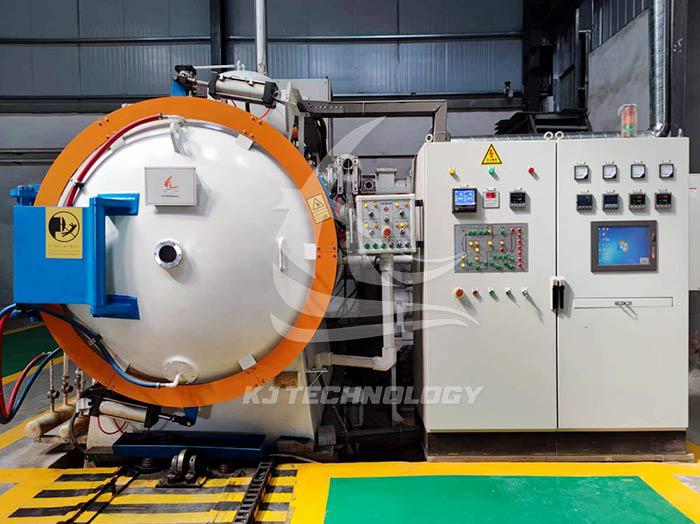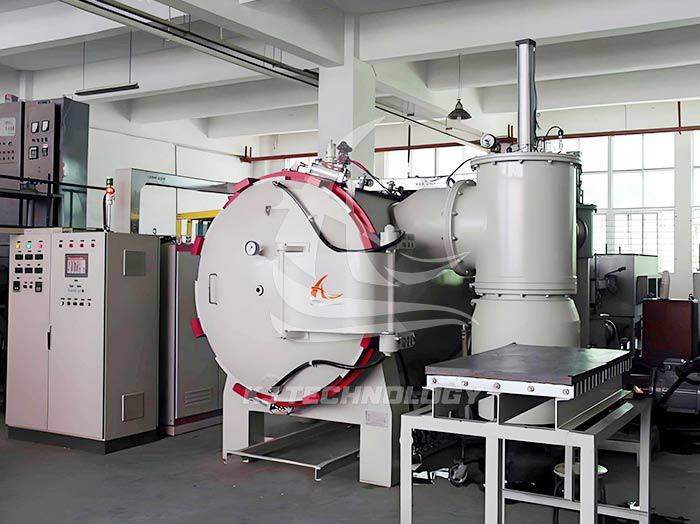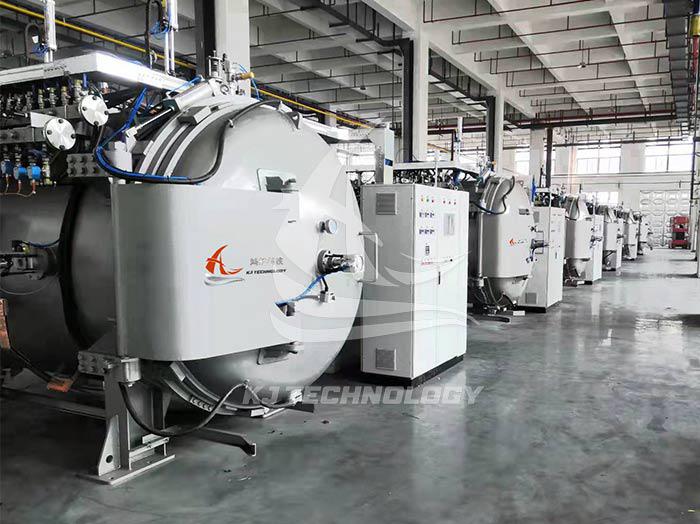What are the characteristics of high vacuum and high temperature brazing electric furnaces?
 08-26-2025 Author: KJ technology
08-26-2025 Author: KJ technology
The high vacuum and high temperature brazing electric furnace, with its core characteristics of ultra-high vacuum environment, precise temperature control, efficient heating and cooling, advanced control system, and wide material adaptability, has become a key equipment for precision welding in aerospace, automotive manufacturing, electronic packaging and other fields. The following is a detailed analysis of its core characteristics:
1. Ultra high vacuum environment: inhibits oxidation and improves welding quality
Vacuum degree index: The maximum vacuum degree of the equipment can reach 10 ⁻ Pa or even lower, effectively eliminating impurities such as oxygen and water vapor in the furnace, avoiding metal oxidation at high temperatures, and significantly improving the strength and airtightness of welded joints.
Application advantages: Especially suitable for brazing easily oxidizable materials such as aluminum, titanium, and nickel based high-temperature alloys, ensuring a bright welding surface without pores or slag inclusions, meeting the stringent requirements for material performance in the aerospace industry.
2. Precise temperature control: meeting complex process requirements
Temperature control accuracy: Adopting a high-precision temperature control system with a temperature control accuracy of ± 1 ℃, programmable control of hundreds of heat treatment curve points, supporting independent temperature control in multiple areas (up, down, left, right, front, and back six areas), ensuring temperature uniformity inside the furnace.
Heating rate: The maximum heating temperature can reach 1500 ℃~1600 ℃, and some equipment can rise from room temperature to 1500 ℃ within 90 minutes, meeting the welding requirements of special materials such as high-temperature alloys and ceramic metal composite materials.
3. Efficient heating and cooling system: shorten production cycle
Heating element: Usually made of molybdenum or tungsten wire, it has excellent high temperature resistance and can stably provide heating temperatures up to 1500 ℃~1600 ℃.
Cooling method: The cooling speed of the forced water cooling system can be adjusted (50~100 ℃/min), and some equipment can drop from working temperature to 200 ℃ within 30 minutes, reducing the damage of thermal stress to the workpiece and improving production efficiency.
Gas circulation: The built-in gas circulation device can adjust the airflow speed to ensure the uniformity of temperature and atmosphere in the furnace, avoiding welding defects caused by local overheating or uneven atmosphere.
4. Advanced control system and safety design
Automation level: Using PLC programming technology, real-time monitoring and precise adjustment of temperature, vacuum degree, gas pressure and other parameters during brazing process are achieved, supporting fully automatic/manual disturbance free switching and abnormal alarm function.
Security protection:
Vacuum protection: Vacuum degree and temperature interlock control to avoid material oxidation caused by insufficient vacuum degree;
Overtemperature power-off: When the temperature exceeds the set value, it will automatically power off to prevent equipment damage;
Water cooling protection: Delayed shutdown when water is cut off to prevent heating elements from burning out due to insufficient cooling;
Sealing design: Multi layer rubber seal combined with metal seal, leakage rate control, ensuring long-term operational stability.
5. Wide material adaptability: meeting diverse process requirements
Applicable materials:
Metal materials: aluminum, copper, nickel, titanium, stainless steel, high-temperature alloys, etc;
Composite materials: ceramic metal, metal metal composite materials;
Special materials: heat-resistant alloys with high aluminum and titanium content, single crystal alloy blades, etc.
Typical applications:
Aerospace: brazing of engine turbine blades, combustion chambers, heat exchangers and other components;
Automotive industry: precise connection of components such as turbochargers, catalytic converters, EGR coolers, etc;
Electronic packaging: ceramic metal brazing for high-density packaging of integrated circuits, power modules, etc;
Medical devices: Precision welding of biocompatible materials such as artificial joints and dental implants.
6. Modular design and customized services
Furnace size: can be customized according to customer needs, with common effective heating zone sizes ranging from 600mm × 400mm × 300mm to 400mm × 400mm × 600mm, meeting the brazing needs of different workpieces.
Function extension: Supports the introduction of multiple protective gases (such as high-purity argon and nitrogen), optimization of vacuum gauge accuracy (can measure vacuum degrees as low as 10 ⁻⁶ Pa), anti fouling structure design, etc., to meet personalized process requirements.








